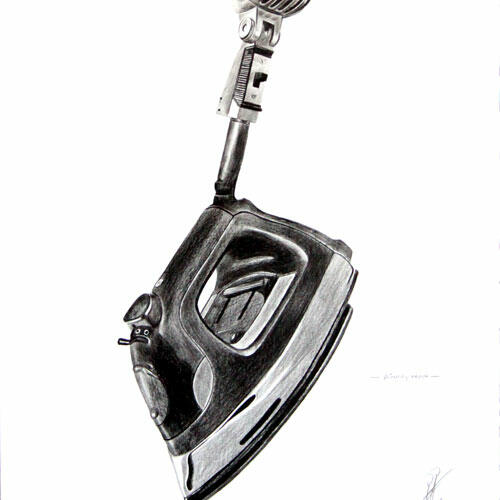Alexandre Arrechea
Galería Casado-Santapau, Madrid
El objeto sacrificado (The Sacrificed Object) is the title under which Alexandre Arrechea (Trinidad, Cuba, 1970) is presenting his first productions in graphite since the days when he had his formal training. After having experimented with various materials, he somehow readopts the one that is perhaps the most “academic”, to surprise the viewer with new concepts. Accustomed as we are to a trend in which installations have a stronger presence, the artist’s proposal becomes more interesting. While a hybridization between design and architecture may be found earlier in his career, the point of departure of the present project is Adán, one of his first works, in which the union between these two disciplines may be seen forming a single work based on two ideas (chair and man) and which might well represent the conceptual synthesis of this new proposal. Thus, this sculpture placed in the center of the exhibition space, marked the origin of a project with a clear interest in linking objects of everyday use with other concepts, and in orienting them towards other experiences. If each element is actually endowed with autonomy, what results from the combination of two objects enjoys a new independence.

For Arrechea, this playing with semiotics in his work has its origin in the association of objects linked by a relationship which is at first sight distant in terms of shape or use, but whose interconnections are determined by the artist’s personal experiences. In this way, the works exhibited in this show contribute new values through their significations, and one may enjoy a completely original object that leads the viewer to an experience that is completely new to him/her. Through these perceptions, the visitor may discover elements in the artist’s life which usually belong in the private sphere, but which have somehow escaped towards the public sphere; the confluence between the objective and the subjective, a new unreal environment created from the real. El objeto sacrificado is completed by another series of more graphic and sculptural works with a strong content representative of everyday illusions, as well as by the traits of Nopal house, an installation project whose framework is apparently the desert and which would maintain a functional character within its conception.
-
 Aliento y vapor, 2011. Graphite on paper, 19.7 x 27.5 in. Grafito sobre papel, 50 x 70 cm.
Aliento y vapor, 2011. Graphite on paper, 19.7 x 27.5 in. Grafito sobre papel, 50 x 70 cm.




